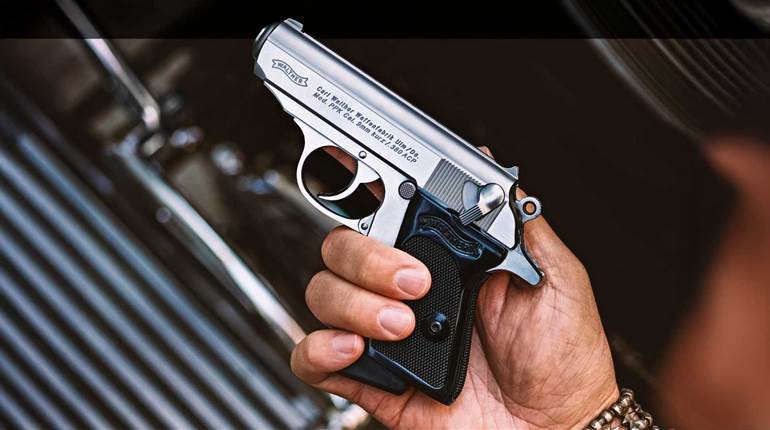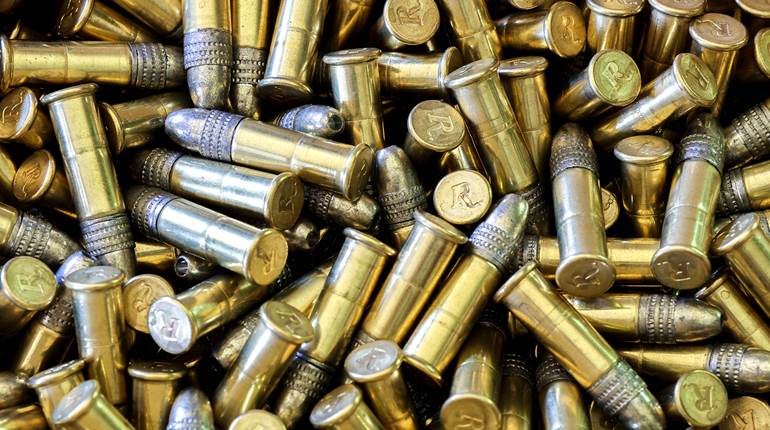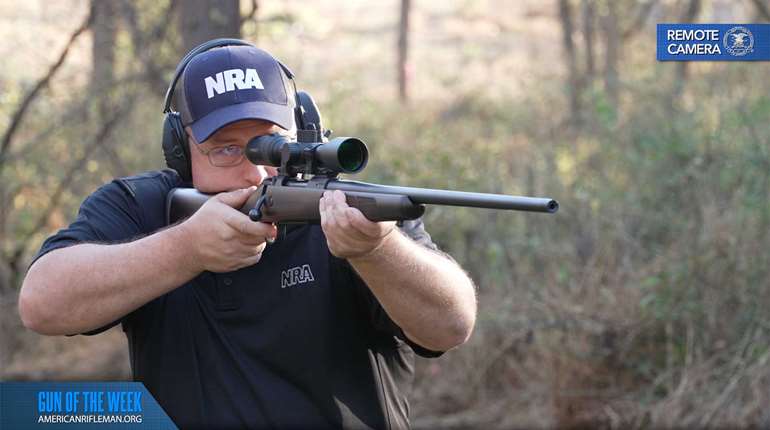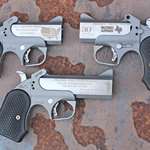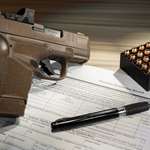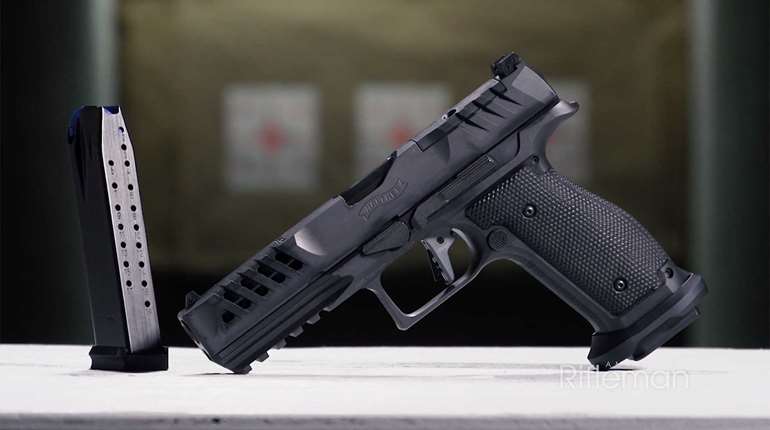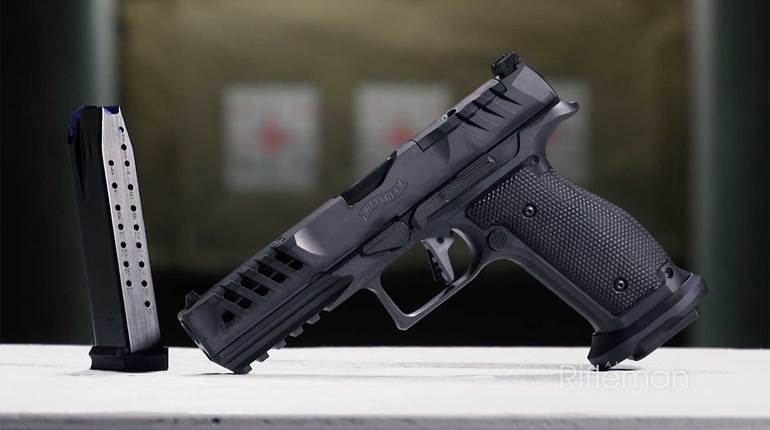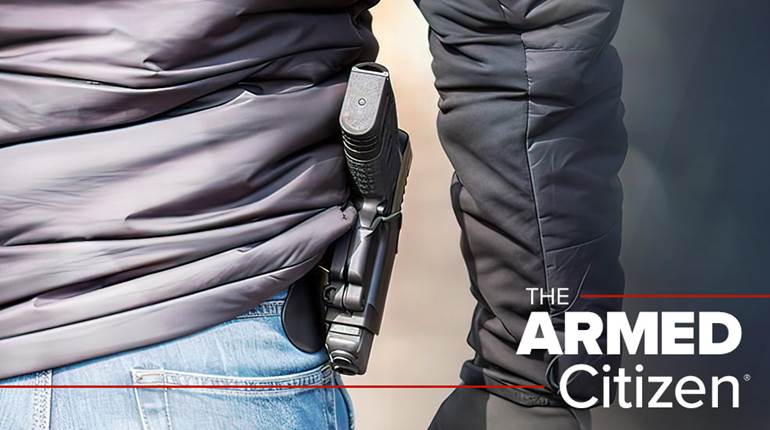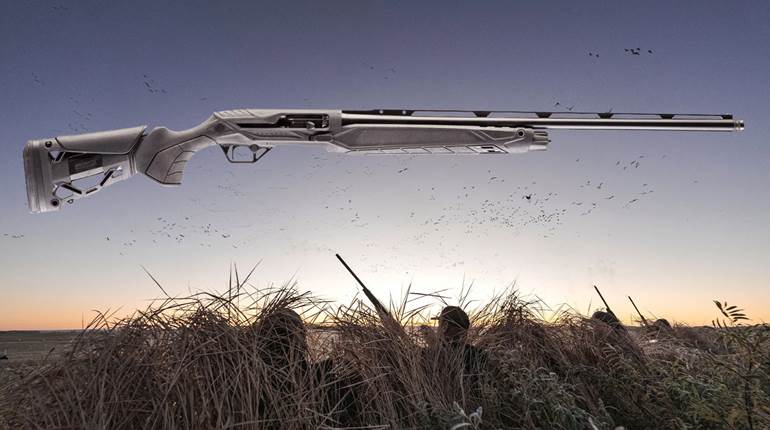
“I’m not sure you would want to teach me,” she messaged me one day. I’ve made no secret that I prefer large, heavy bullets—specifically the .44 Spl. and .45 ACP—as the preferred rounds for self-defense. “All I have is a .22,” she said. I responded that a .22 is a near perfect place to start when it comes to learning self-defense shooting and gun handling. The plain truth is that the best gun to have when a gunfight or violent confrontation breaks out is the one you have on you at the time of the incident. A pair of .22 LR bullets delivered to the proper place at the right time beats a slew of other rounds sprayed in the general vicinity of the bad guy.
This past spring was a wet one here in Wyoming, and it impacted the opportunity for any shooter to get in much range time. Nonetheless between rainstorms and work schedules Ginny and I were able to work out some time to introduce her to shooting, especially as it relates to self-defense.
I make no claims as a professional firearms trainer. That said, I have introduced more than two dozen people with diverse backgrounds to shooting during the last 40-plus years, including my mother—who once was vehemently anti-gun—to youngsters and fellas in my own age group. My intent has never been to turn someone into a testosterone-overloaded mall ninja; rather I tried to make shooting an enjoyable pastime that has ancillary assets as a skill capable of saving one’s life.
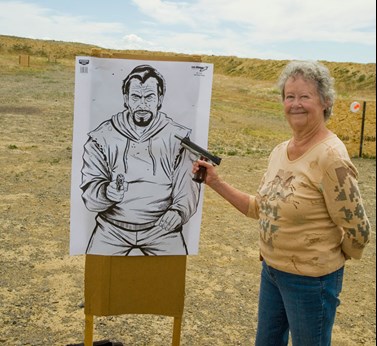
To that end, I’ve kept two things in mind. Shooting should be fun, or at least enjoyable. And don’t turn a shooting lesson or session into an endurance event. Let the student determine his or her limitations. A lesson that is fun and enjoyable whets the student’s appetite to learn more and makes it easier to teach them. And while I am steadfast in my own preference for large, heavy bullets to defend oneself, if such rounds are painful for the student to employ, they are far more likely to give it up. Just because a person cannot physically handle a major caliber doesn’t mean they have no right to be able to defend themselves to the best of their ability.
Ginny started slowly, and that was by my design. Her first shots from her SIG Mosquito were at 3 yards at a regular bullseye. The purpose was to gain familiarity with the gun and get grounded in the basics of sight alignment and trigger control. Not surprisingly, her groups were very good from the get-go. Getting good groups early on instills confidence and makes the student eager to go to the next level. That session lasted about an hour.
A couple of weeks later we had another lesson. I started her again at 3 yards—this time on a “Bad Guy” target from Birchwood Casey—to make sure she hadn’t forgot anything. She hadn’t. I moved the target back to 5 yards and started working on presentation from the low ready position. Too, I started her focusing on the targets eyes as a point of aim. She progressed splendidly, and then I made a mistake.
Ginny is an eager student and not afraid to try anything new. I started showing her, and then letting her, shoot some close-up drills—arm’s length, one-handed shots at the eyes and speed rocks to the groin. The session ran a bit more than an hour and a half. The next day she messaged me that her hands were cramping up and she was a bit sore. My bad. As we get older—and I know this first hand—we don’t have the endurance we had when we were younger. I was eager to show Ginny some of the stuff we would spend more time learning that I over-extended the session. Each shooting session should be long enough to get one or two points across and no more.
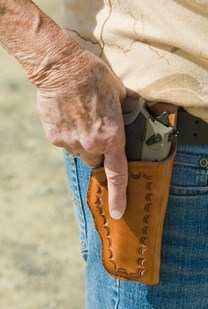
By her third lesson Ginny started learning drawing and presentation from the holster. A good friend of mine, Rob Leahy of Simply Rugged Holsters out of Prescott, Ariz., provided Ginny with one of his Cattleman holsters and a magazine pouch. Like anyone new to self-defense shooting, Ginny started slow and developed speed as her familiarity with the pistol and holster became greater.
Ginny’s comfort with the pistol and shooting increased to the point where she began to look at other, more powerful alternatives to her .22 LR Mosquito. She asked me about all the hoopla over a 1911 pistol—what was it; why do some like and others not, etc. I let her try my Kimber Custom Shop Rimfire—a 1911-style pistol chambered in .22 LR—and her reaction after the first shot was, “Oh, this is very nice!” She also tried out an S&W Model 60 I have with target wadcutters and found it pleasant to shoot as well. I believe that in the not-too-distant future there will be a center-fire in her holster. Too, I pity anyone stupid enough to attack this quiet grandmotherly lady. She may not be a candidate for a law enforcement SWAT team, but anyone who messes with her is likely to find himself in a world of hurt.
10 Rules for Teaching New Senior Shooters
- Do not start with a powerful center-fire.
- Keep the shooting sessions short, no more than an hour.
- Keep the ranges short so that it is easier to shoot good groups.
- Be aware of and accommodate physical limitations.
- Take frequent breaks; sit down off the range and discuss tactics and scenarios.
- Make shooting fun.
- Do not get too wrapped up in tactical dogma.
- Give the shooter an opportunity to find the best way to solve a problem.
- Celebrate successes; do not come down hard on corrections.
- Let the shooter progress at his or her own rate; don’t try to force them too quickly.













